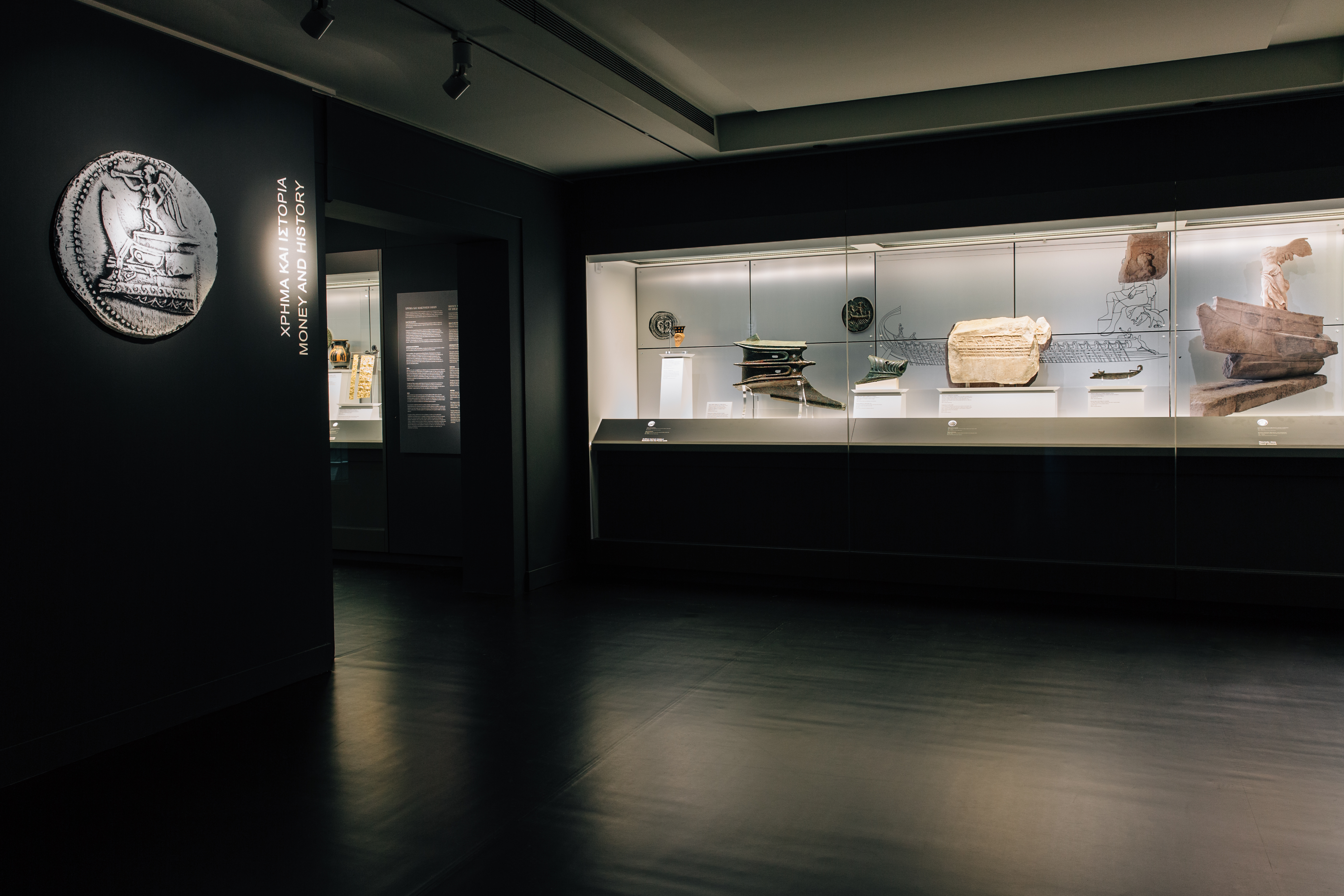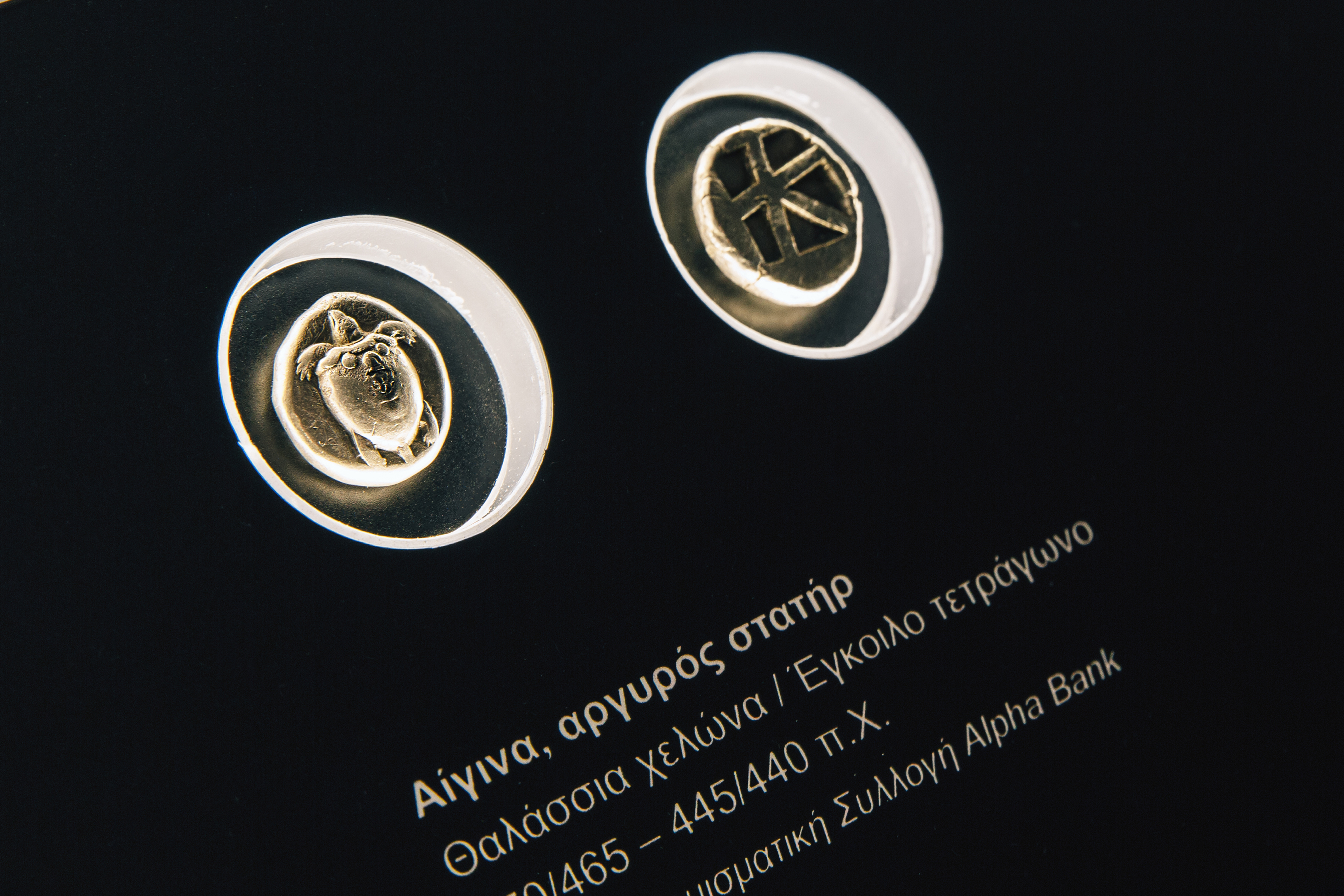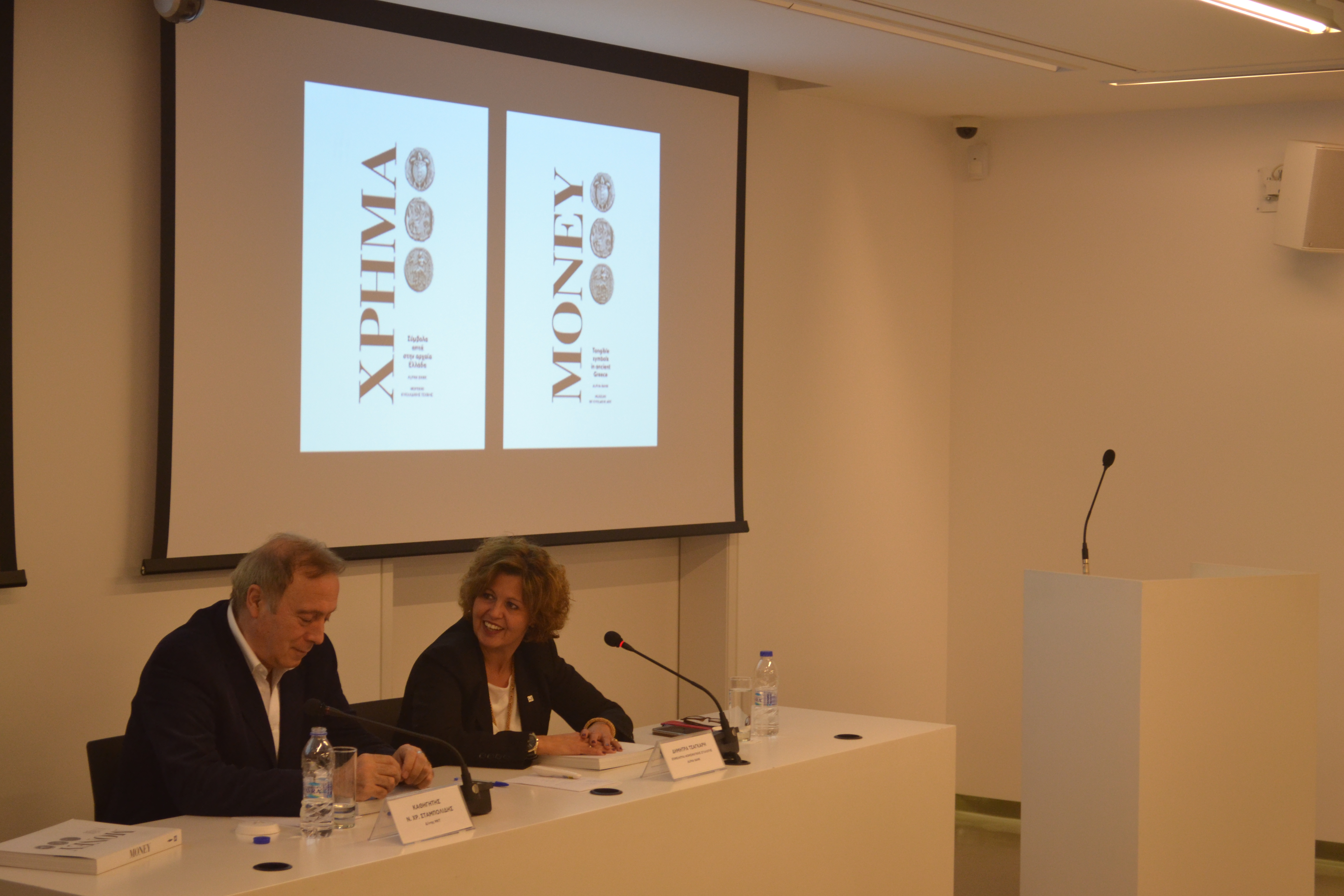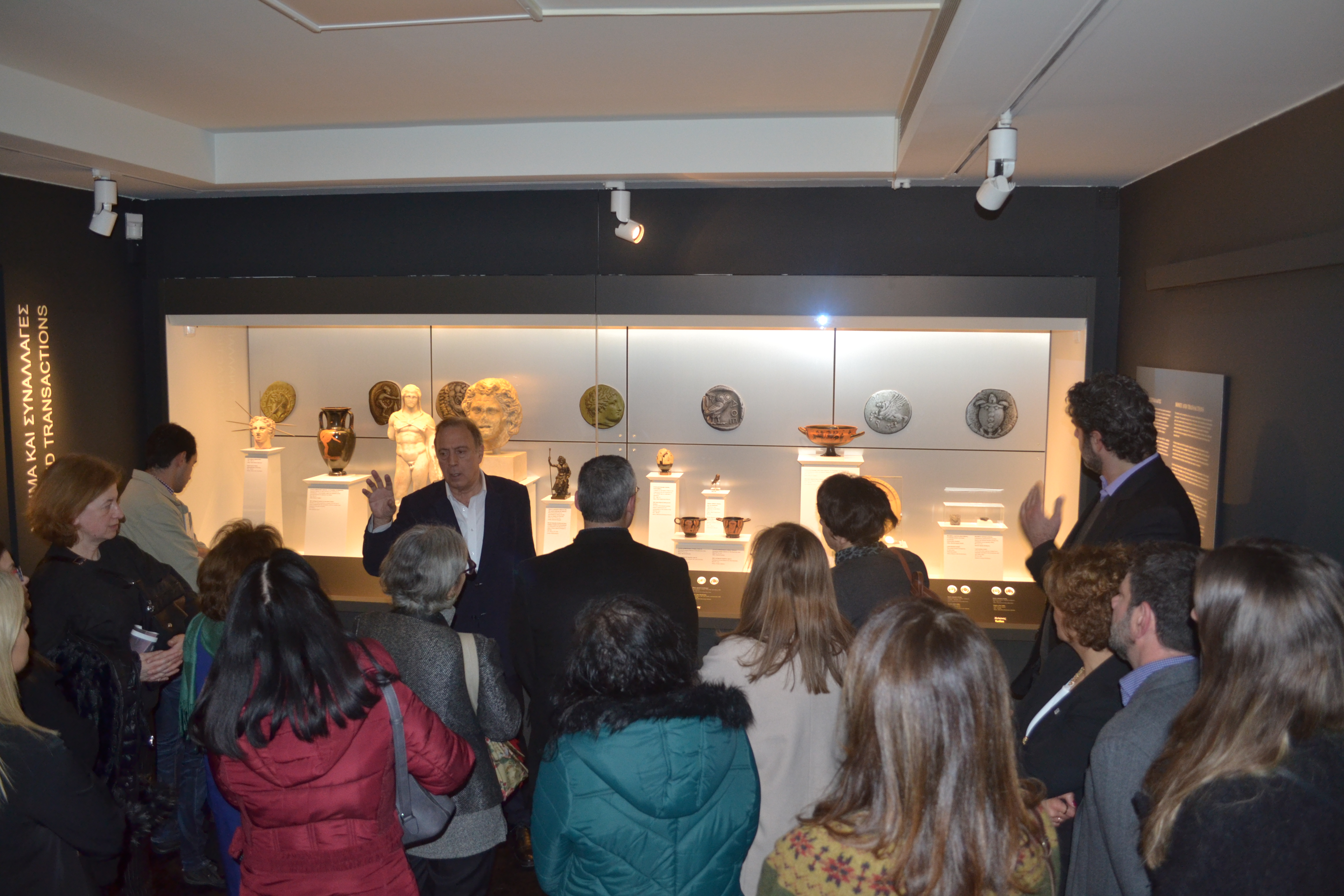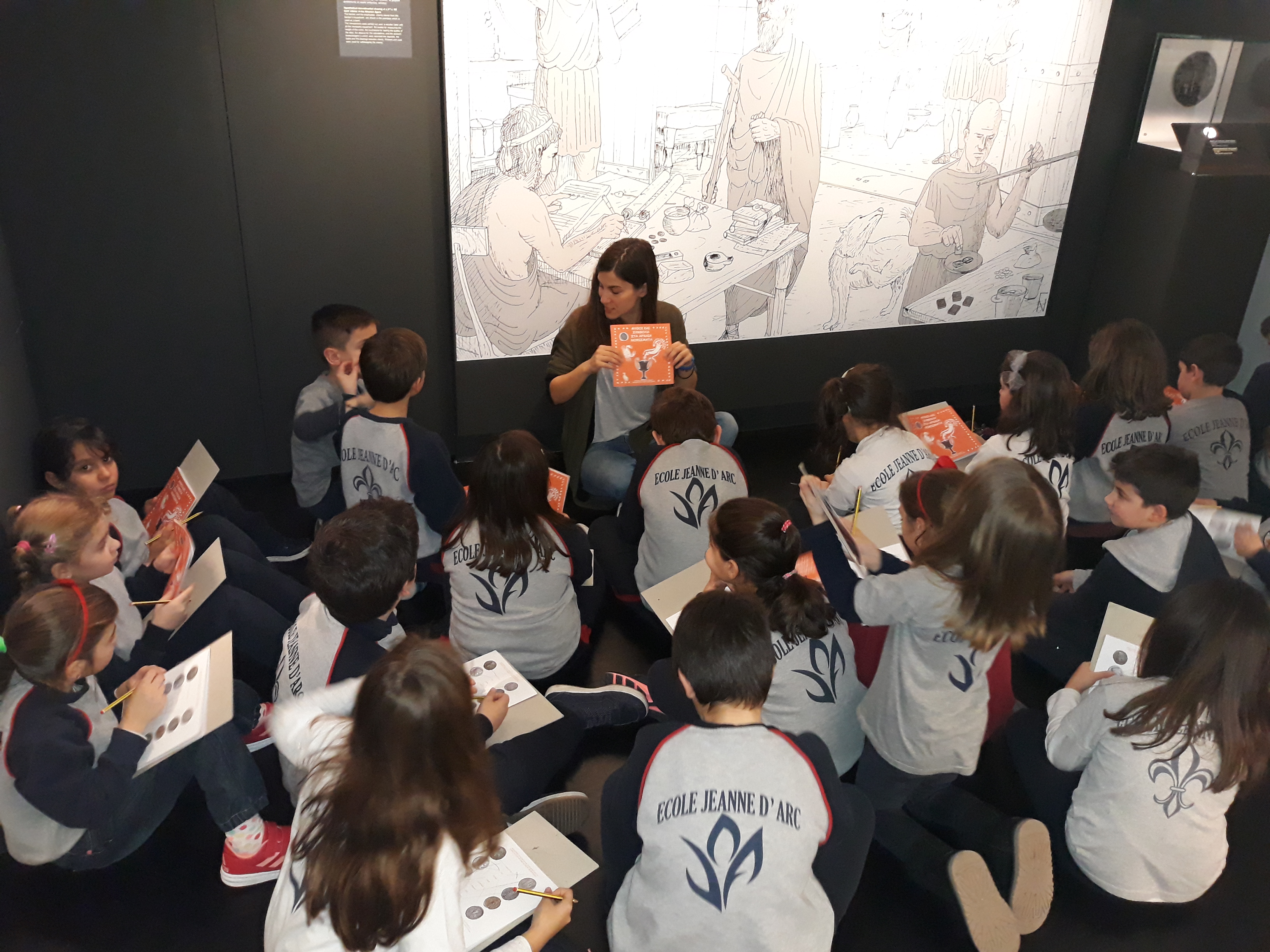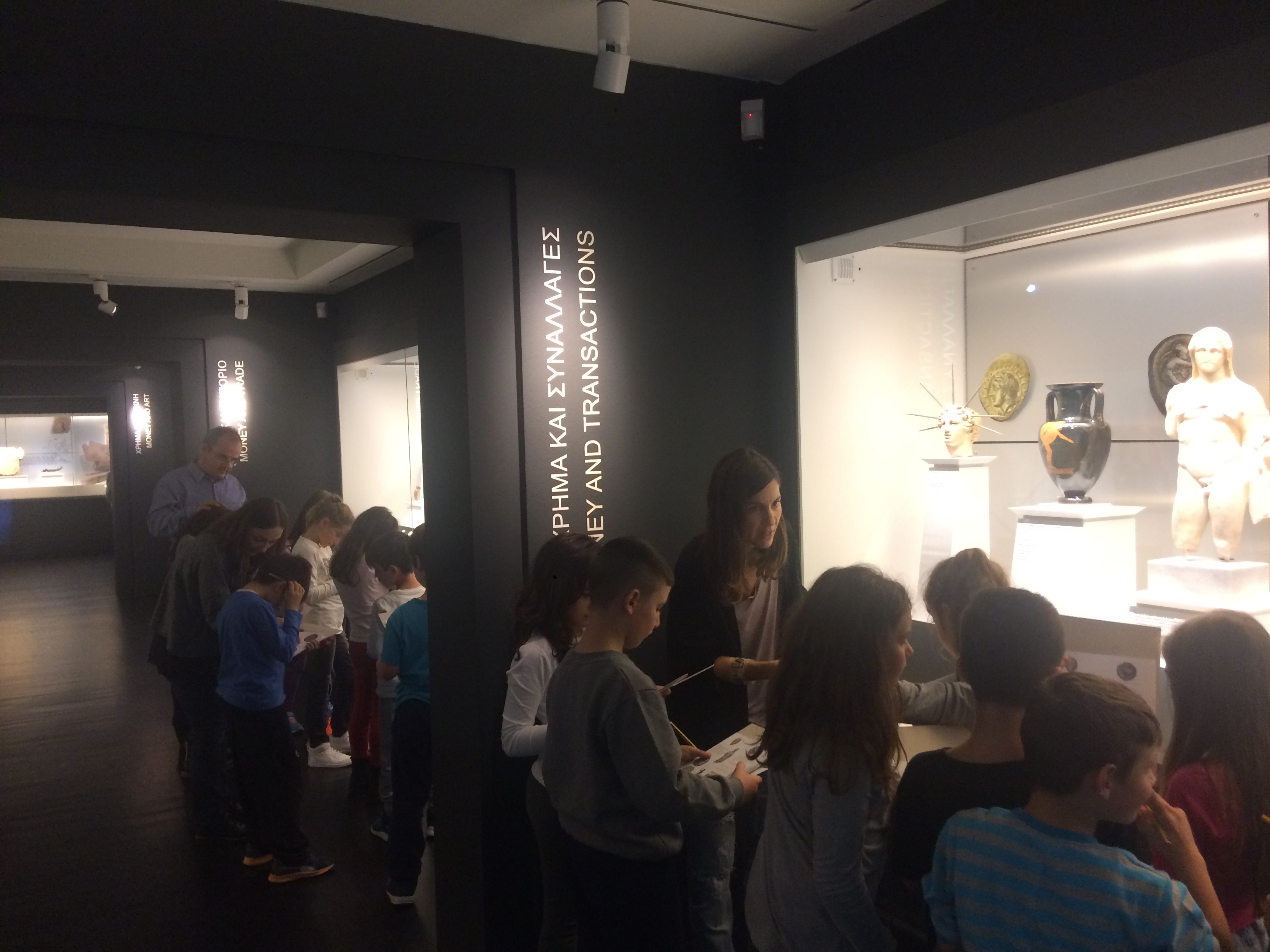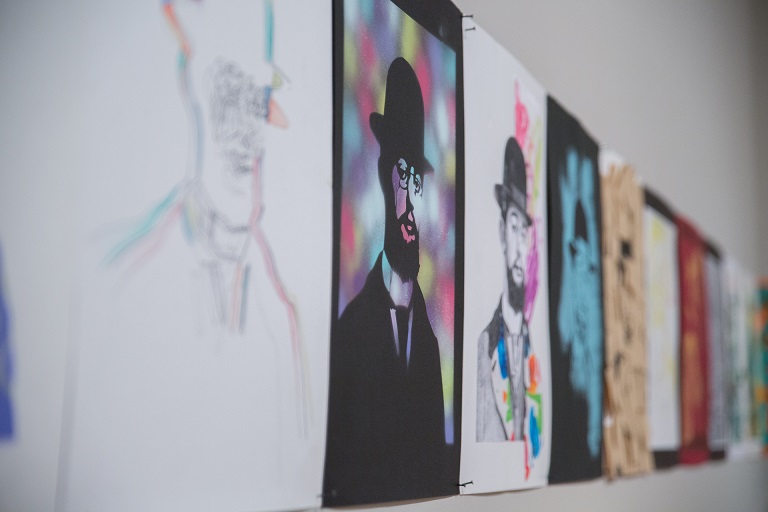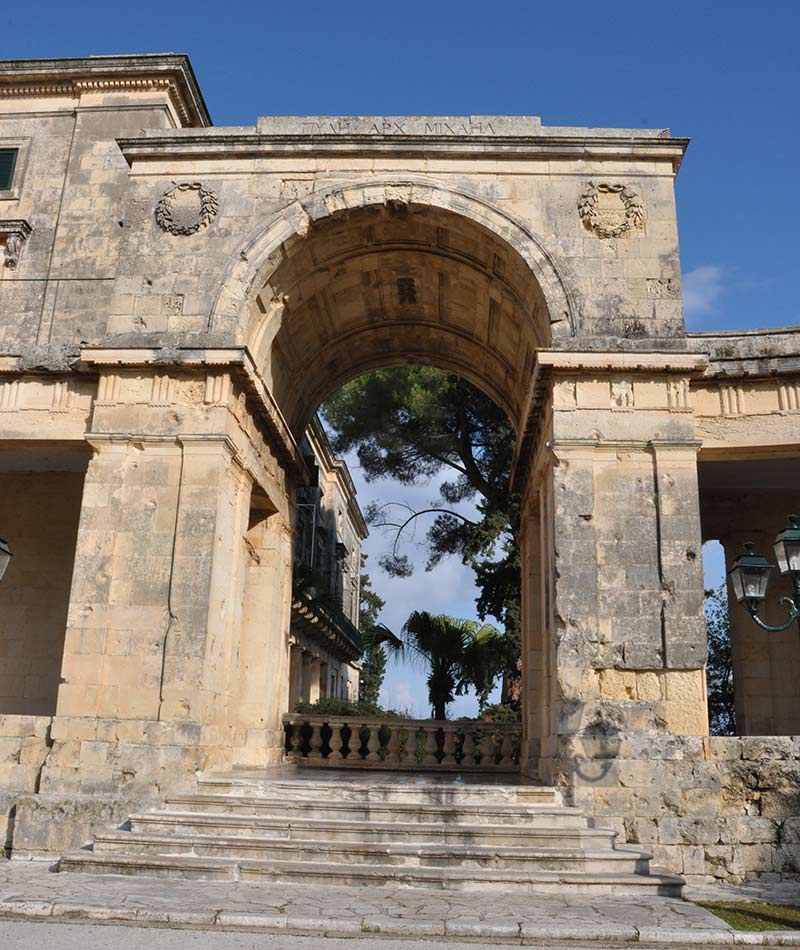ENDED
Exhibition “Money. Tangible Symbols in Ancient Greece”
The exhibition “Money. Tangible Symbols in Ancient Greece” showcases 85 coins from the Alpha Bank Numismatic Collection together with 160 artefacts from 32 archaeological museums and collections in Greece, Italy, France and the United Kingdom. The exhibition is about the various references and interpretations of the symbols engraved on coins.
The coin as a symbol
The exhibition brings to light the symbolisms of ancient coins.
Coins are first and foremost the basic means of exchange. People satisfy their day-to-day needs and the State carries out payments and meets its obligations.
However, ancient coins are tangible symbols in their own right. One can hold, read and understand them. They depict representations that provide important information about the issuing place and authority.
A multifaceted approach
The exhibition is structured in 8 sections:
- Money and transactions. Coins are the basic means of exchange. Ancient coins are known with names stemming from their iconographic types or the issuing authority.
- Money and trade. Coins may depict products and goods reflecting a State’s agriculture, animal husbandry and fishery. The exhibition showcases coins with themes relating to seagoing trade that depict ships, as well as coins with themes relating to metallurgy and arts that depict Hephaestus.
- Money and art. Coins even depict material cultural creations. They show images representing the issuing authority’s worship, ideology, achievements and history.
- Money and history. Coins often refer to specific historical facts or persons.
- Money and circulation of ideas. The exhibition showcases coins that serve as a means to circulate ideas such as abundance, luck, victory, wealth and power.
- Money and propaganda. Coins were also used as a visual communication tool to spread political messages to very wide audiences. The issuing authority aimed at mild or even pure propaganda serving personal, political, oppressive and military goals.
- Money and society. People use coins in their market transactions, as well as in other activities: as a “bribe” for the gods in exchange for good luck (worshipper in Amfissa) or as a means to satisfy their senses (tavern in Delos).
- Money and banks. The exhibition presents banking activity in ancient times, which goes hand-in-hand with and results from the continuously increasing use of coins in the economy.
The exhibits
The exhibition showcases 85 coins from the Alpha Bank Collection together with 160 artefacts from 32 archaeological museums and collections in Greece, Italy, France and the United Kingdom. Artefacts include clay vases and figurines, marble and bronze statuettes, reliefs, gold jewellery, weighting tools, coins issued by closed groups and signs.
Multimedia and digital projections
The exhibition includes Coin-o-rama, a multimedia application created by the Institute of Computer Science of the Foundation for Research and Technology. Visitors can see enlarged images and get detailed information on the exhibits. They can also examine a big map with the mints mentioned.
The scientific team
Exhibition curators:
- Nicholas Chr. Stampolidis, professor of Archaeology, University of Crete, director of the Museum of Cycladic Art.
- Yorgos Tassoulas, archaeologist (MPhil.), curator of the Museum of Cycladic Art.
- Dr Dimitra Tsangari, numismatist, curator of the Alpha Bank Numismatic Collection.
The contributors
Artistic and architectural design: Stamatis Zannos.
Guided tours
Guided tours for the general public are also available. Visitors get the chance to learn about the various references and interpretations of symbols engraved on the coins and the historical context surrounding the exhibits.
Educational programme and summer workshops
2 educational programmes for primary and secondary school students are hosted during the exhibition:
- Myths and symbols on ancient coins.
- Coins and symbols of everyday life in ancient Greece.
Exhibition catalogue
The exhibition is accompanied by the scientific catalogue Money. Tangible Symbols in Ancient Greece. The publication has a wealth of photographic material and is available in Greek and English. It was edited by Nicholas Chr. Stampolidis, Dimitra Tsangari, Yorgos Tassoulas.
Buy the publication Money. Tangible Symbols in Ancient Greece from Alpha Bank’s e-shop.

